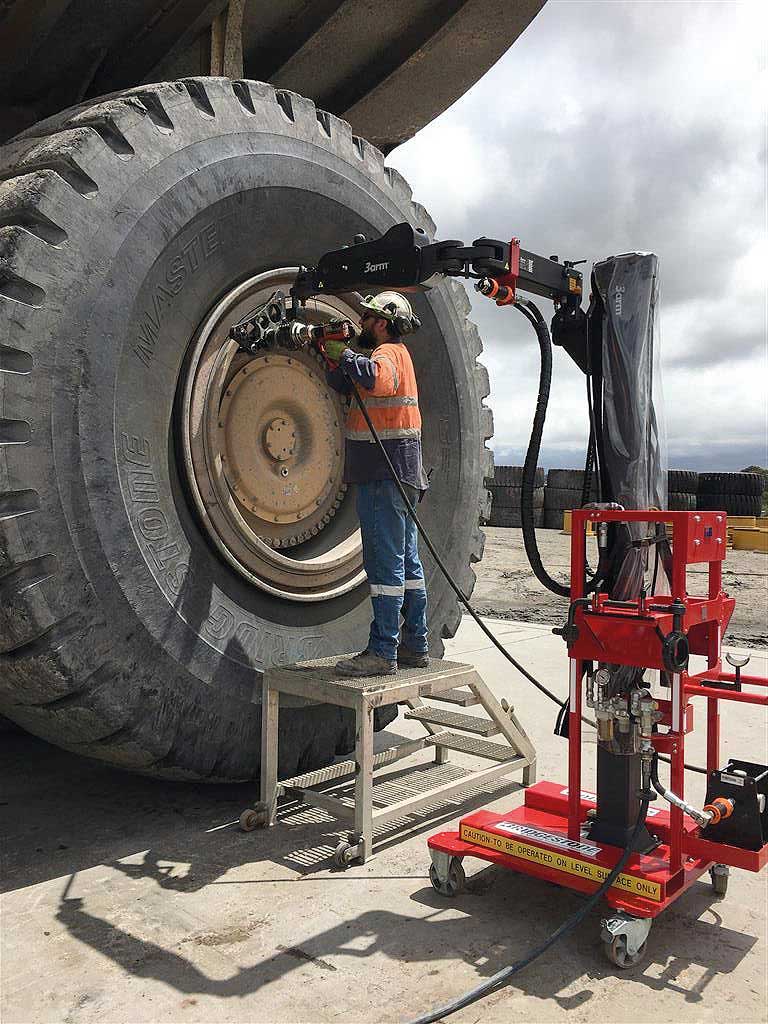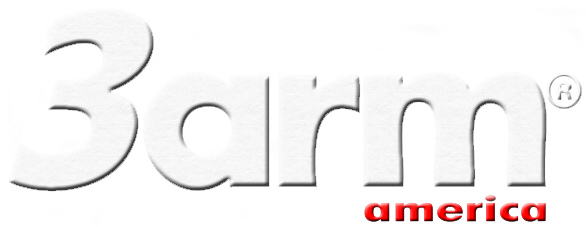What are the recommended limits of exertion to prevent injuries?
The CDC recommends creating an ergonomically sound work environment to prevent soft tissues injuries and musculoskeletal disorders (MSDs) caused by sudden or sustained exposure to force, vibration, repetitive motion and awkward posture. To do that they recommend designing tasks, workspaces, controls, tools, and equipment to fit employee’s physical capabilities and limitations.
Exertion is the effort an individual needs to expend to accomplish a certain task, such as pushing and pulling or lifting. And force is the energy required to accomplish a task, which is measured in Newtons or pound-force (lbf).
Recommended force limits for whole body pushing and pulling tasks are outlined in The International Organization for Standardization ISO Standard 11228-2:2007. The recommendation applies to the healthy adult working population and is established to provide reasonable protection to the majority of this population. The guidelines are based on experimental studies of push-pull tasks and associated levels of musculoskeletal loading, discomfort/pain, and endurance/fatigue.
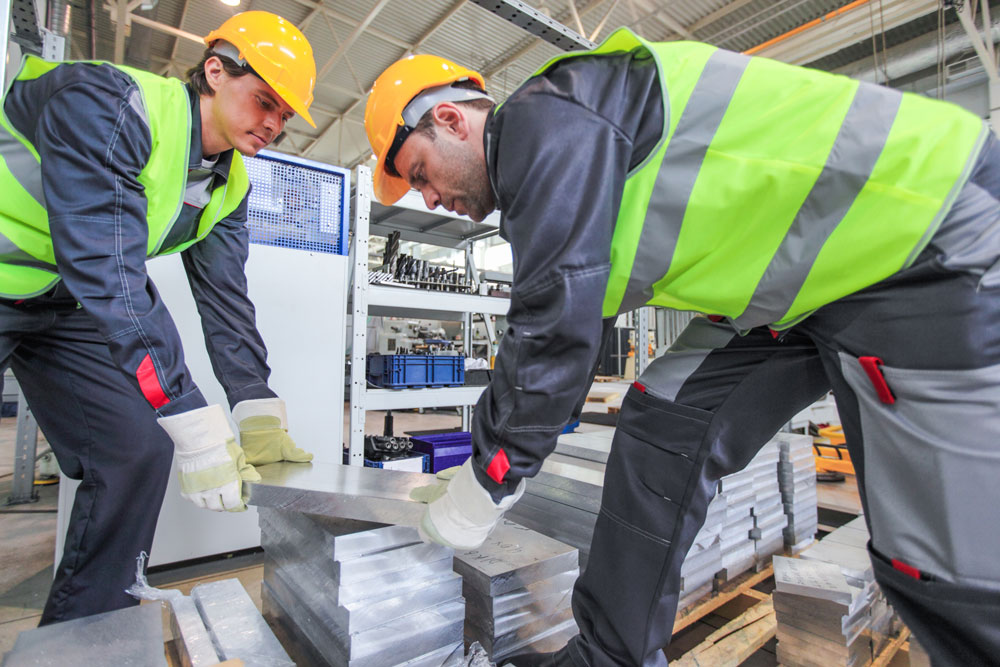
Implementing ergonomic solutions like lift assist and pick-and-place arms by 3arm reduce the force exertion of operators, which reduces musculoskeletal disorders and accidents.
How can 3arm ergonomic solutions help?
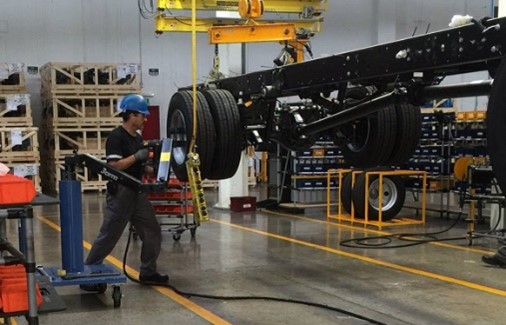
Ergonomic tool-balancer arms by 3arm reduce injuries and accidents and increase productivity by removing the weight of the tool from the operator. They can safely absorb substantial torque and reaction and vibration forces during operation of tools like impact wrenches, nutrunners and grinders, eliminating possible torque and vibration reaction injuries.
3arm’s “pick and place” Manipulator is a powerful lift assistance arm with a variety of gripping configurations that allows operators to pick up parts and move them to and from conveyors, assembly lines, machine tools and more – up to 110 lbs. This allows operators to conduct safe and precise orientation and placement of heavy objects.
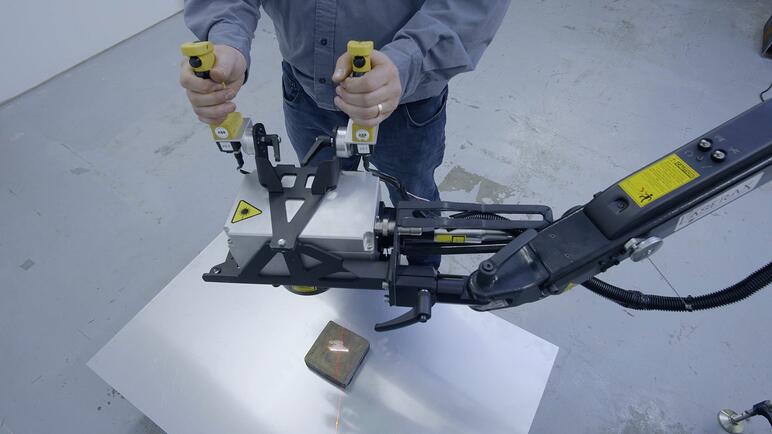
3arm (Tecnospiro) worked with the Center for Applied Ergonomics (CENEA) to conduct testing of 3arm’s ability to reduce the force required to do real-world scenario tasks. The limits of force required for the use of these equipment were calculated by applying the criteria of method 3 (the most precise) of the technical standards EN-1005-3 and ISO 11228- 2 (Annex F).
To calculate the limiting force, the following factors were considered:
- Action: Isometric force with one arm, standing, horizontally and vertically.
- Speed of the movement: Action implies an appreciable movement
- Frequency of actions: ≤ 20 actions/min and duration of every action ≤ 3 seconds.
- Duration of equipment use: > 2 hours/shift.
- Percentage of the population to protect: 85% (the standard EN 1005-3 establishes to use 85% for the working population).
The limiting force depends on the percentage of the population to be protected. For each population group, based on gender and age, the limiting force was calculated and it was found that keeping the force less than about 375 N can protect 85% of the working population.
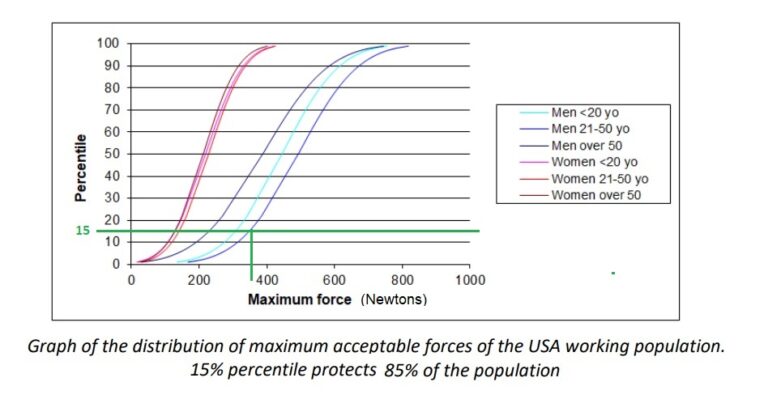
Eastman Kodak Company outlined real-world examples of the recommended upper force limits for horizontal and vertical pushing and pulling to help employers understand the limits of safe work tasks. The Canadian Centre for Occupational Health & Safety has some informative tables on these limits.
For example, the recommended force for a horizontal pushing and pulling activity using primary arm and shoulder muscles while standing, such as pushing an object at or above shoulder height, has an upper limit of 110 N.
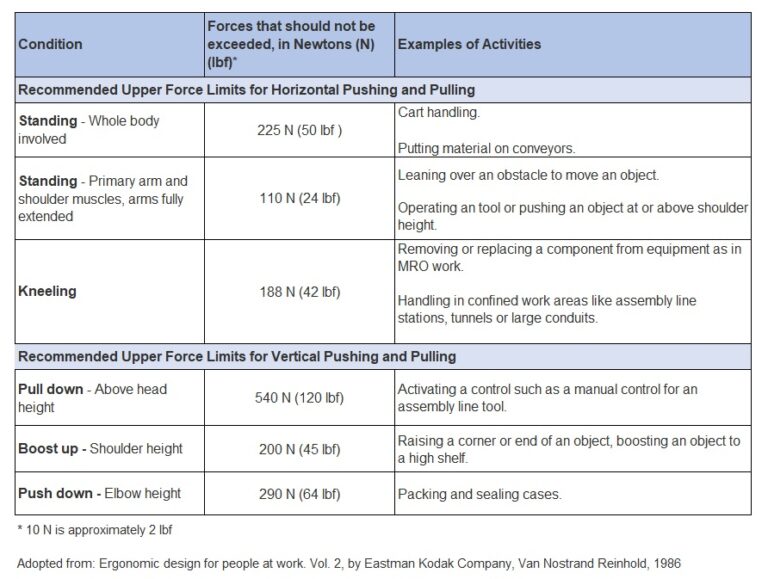
The upper force limits for tasks that consist of vertical pushing or pulling at shoulder height, such as raising an end of an object or boosting an object to a high shelf, is 200 N.
3arm’s tool-balancer and pick-and-place manipulator solutions significantly reduce the force required to do many tasks required of manufacturers, assemblers and foundry workers. This translates into healthier and happier employees and a bigger profit margin for employers.
Some of the results of the testing with 3arm solutions are as follows:
Example #1 – Using a Series 3 tool-balancer with a nutrunner weighing 29.5 pounds.
Result: The average horizontal force is 15.7 N and vertical force is 33.6 N – significantly below the 100 N limit recommended for women and the 375 N limit recommended for men of nearly all ages.
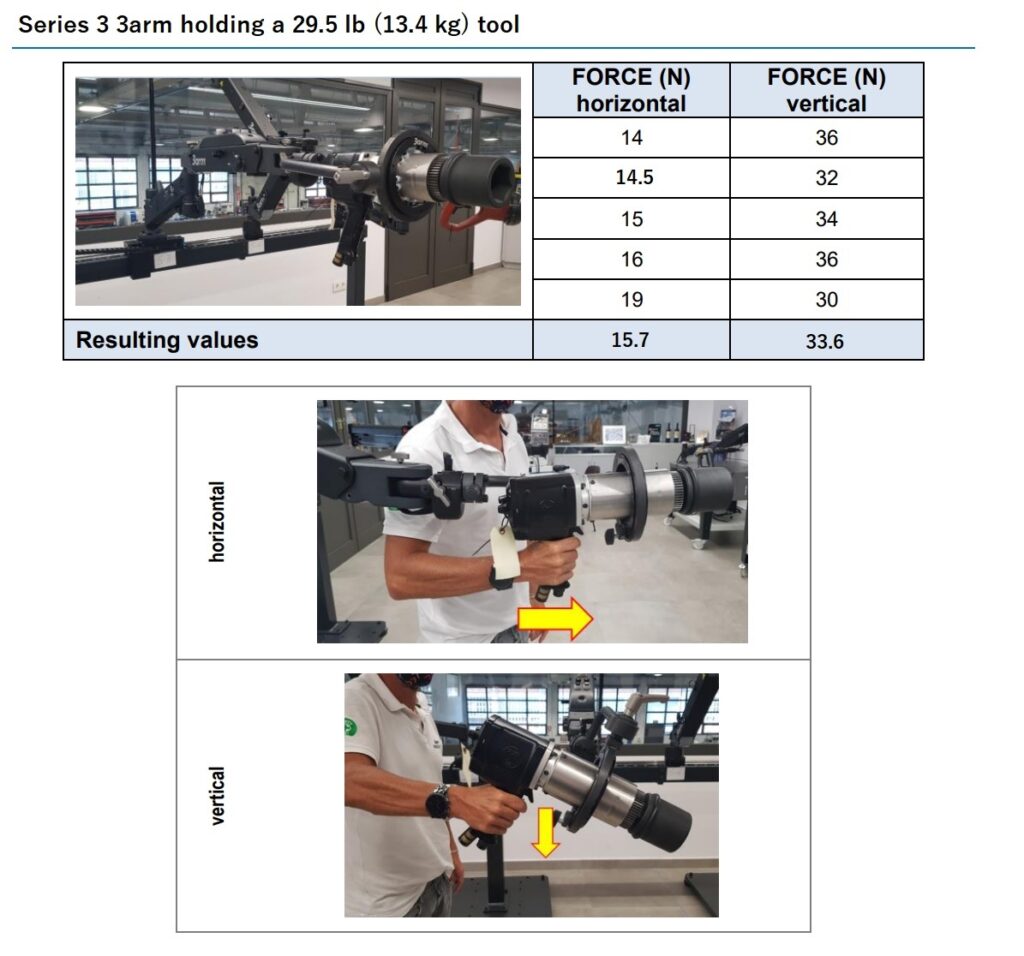
Example #2 – Using a Series 4 tool-balancer with a nutrunner weighing 17.2 pounds.
Result: The average horizontal force averages to 16.3 N and vertical force with two tests of shock absorption are all significantly below the recommended limits for men and women of all ages.
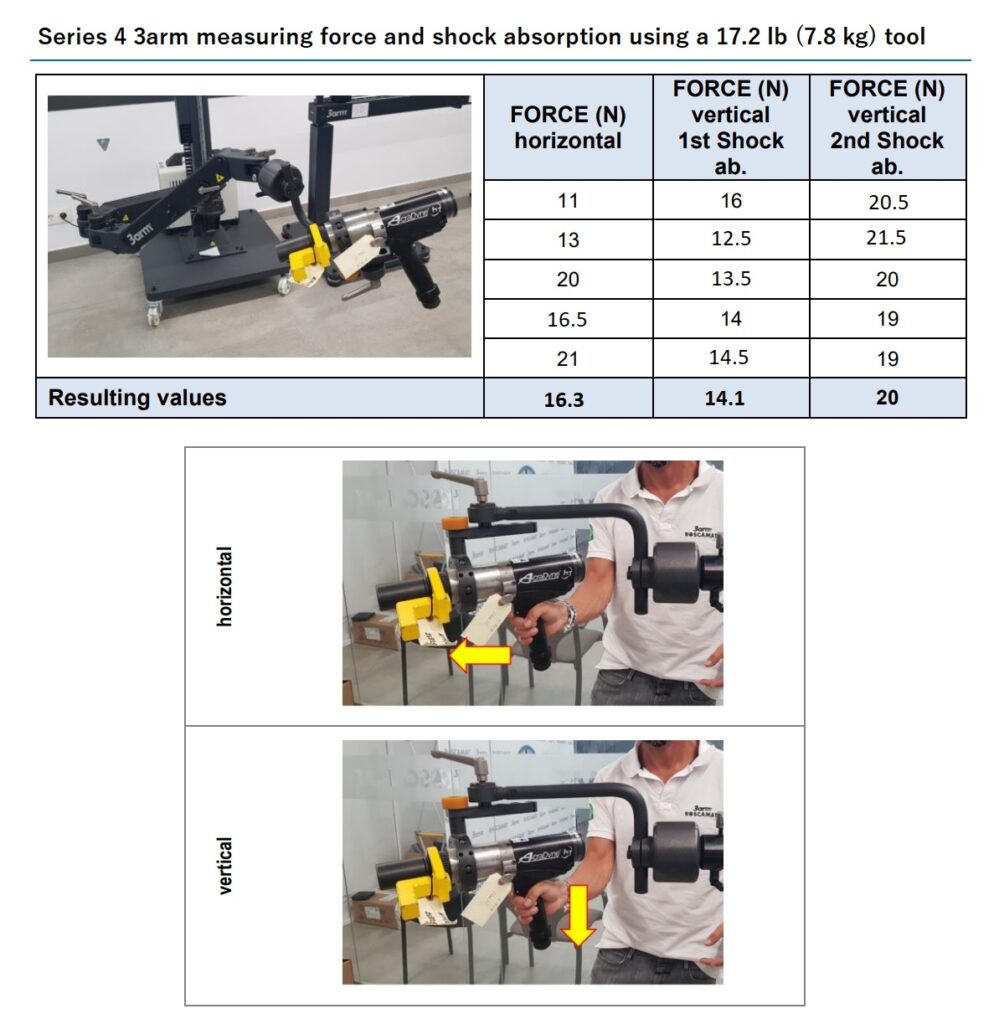
Example #3 – Using a Pick and Place Manipulator to pick up 44 lb and 66 lb parts.
Result: The force required to lift these heavy parts was rendered nearly insignificant by the use of the 3arm Manipulator and well below the limits required for ergonomic safety.
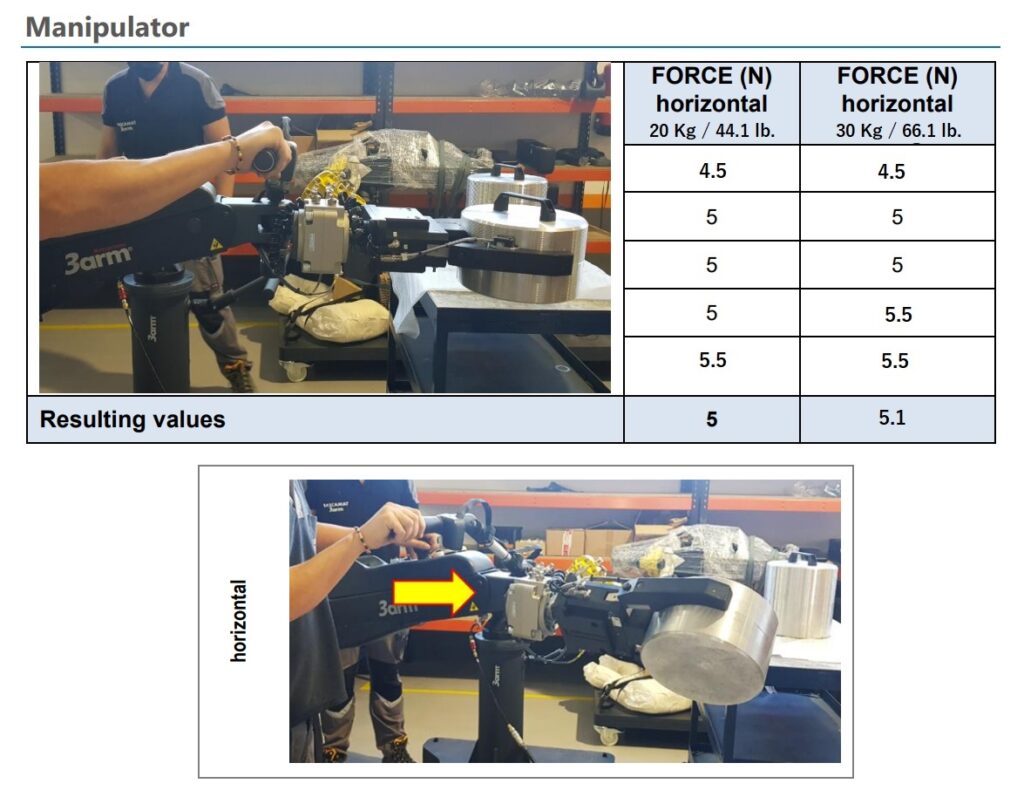
Injuries or accidents on the job can cost you a significant amount of money. Investing in an ergonomic lift assist device like 3arm to ensure safe force exertion limits may initially seem expensive until you calculate the cost of an injury to just one employee.
For example, suppose an employee lifts a heavy part and accidentally drops it on his hand or foot. According to the OSHA SafetyPays program cost estimator, the direct and indirect costs of one fracture injury to your company add up to more than $115,000. How many injuries has your company workforce had over the past five years and how much have you paid out in claims, health insurance and missed days of work? An investment in ergonomic solutions to protect your employees is a no-brainer and will pay for itself many times over.
Research has been done to prove the worth of ergonomic tools to help ease the load of operators. The Washington State Department of Labor and Industries found out ergonomic solutions are well worth the investment. After reviewing 250 ergonomics case studies, they found investing in a good ergonomic solution provided significant positive impact on cost savings, productivity and product quality.
As shown in the test results above, ergonomic solutions by 3arm have been proven to significantly reduce the amount of force needed to do many tasks in manufacturing, creating a safer and healthier workplace. Retain valuable employees by protecting them with 3arm solutions. This allows to retain tribal knowledge and create a reputation that attracts great quality recruits.
For more information, contact us at 3armAmerica to see how we can help design an ergonomic solution for your needs.
